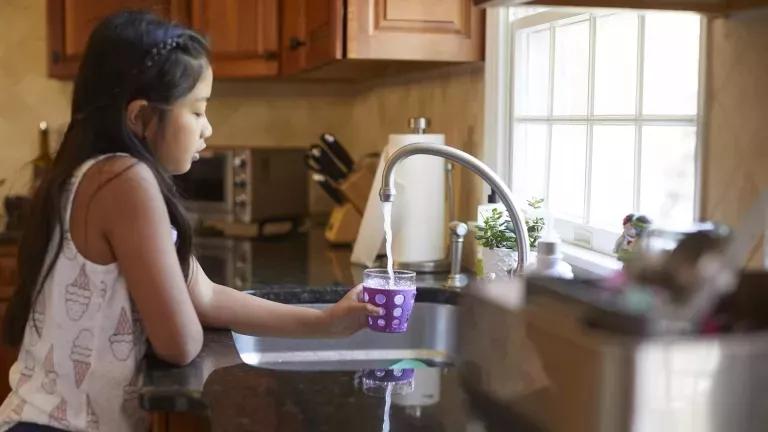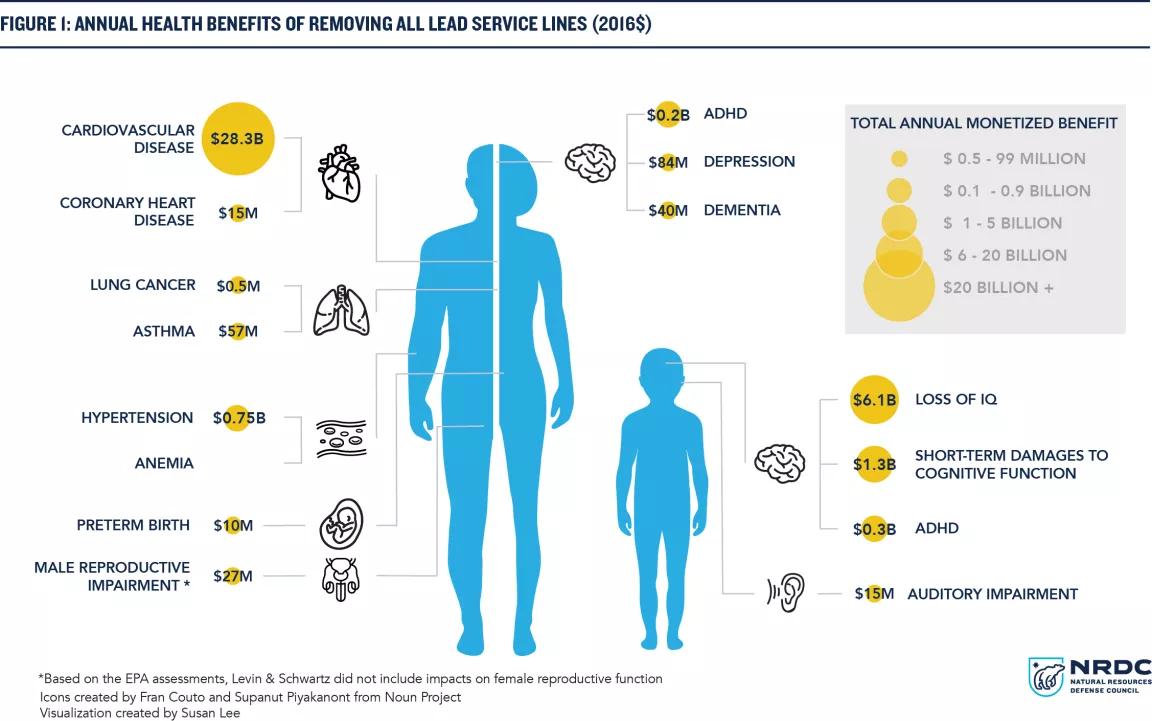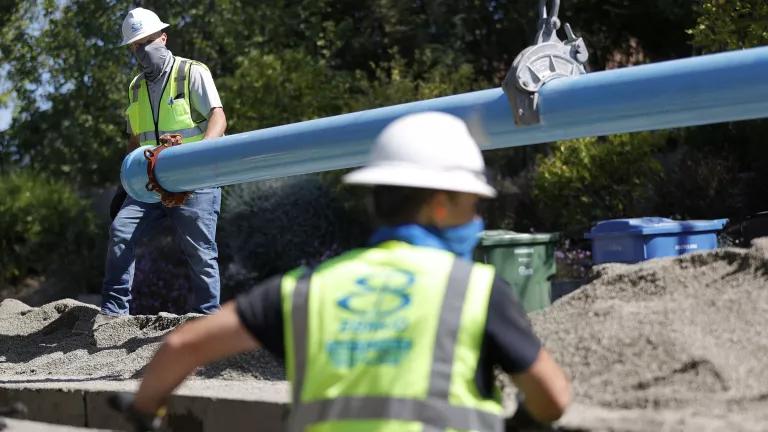Removing Lead Pipes Would Save Lives—and Money
Over the next 35 years, removing lead service lines would result in significant cost savings—$786 billion—from avoided health impacts.

Shima Green for NRDC
Today, NRDC, alongside partners across the country, is releasing a major study documenting how the removal of every lead pipe in the country would supply huge cost savings from avoided health impacts. The paper quantifies those savings, on both the state and national levels, and finds that over the next 35 years, the country could save a jaw-dropping estimated $786 billion in health costs. The state-by-state benefits are noted in Table 1 below, which uses both the recent U.S. Environmental Protection Agency (EPA) estimates of the number of lead service lines in each state and NRDC’s 2021 estimates based on our 50-state survey.
While most people are aware of the risks of developmental delays and IQ loss in children due to lead exposure, many are surprised to learn of the enormous impacts of the metal on adults, especially the link between lead and cardiovascular disease and death. A June 2023 formal scientific statement from the American Heart Association highlighted the considerable evidence that exposure to lead is linked to many cardiovascular diseases, including stroke and heart attack. Indeed, a major study published in the scientific journal Lancet documented these cardiovascular risks, and the EPA’s “Integrated Science Assessment for Lead,” shows the heavy toll of lead exposure on the nation’s health.
In fact, according to our analysis and the recent scientific study by Harvard researchers upon which it is based, 90 percent of the monetizable health benefits of reducing lead exposure come from reduced cardiovascular disease and deaths. Yet when the Trump administration adopted its deeply problematic revisions to the EPA’s Lead and Copper Rule, the agency ignored the vast majority of these benefits of reducing lead exposure—such as cardiovascular disease, cancer, ADHD, short-term damage to cognitive function, and impacts on reproduction—in its estimate of economic impacts. These benefits are illustrated in Figure 1 below.
NRDC’s study is based upon a published scientific paper from Harvard researchers Ronnie Levin and Joel Schwartz. That paper used both the EPA’s integrated scientific assessment and its calculated impacts of lead in drinking water on health to develop estimated national benefits of reducing lead in tap water. With the help of Levin, NRDC’s study, released today, extracts the benefits attributable to removing lead service lines. We then allocated those benefits to each state based on the EPA’s and NRDC’s estimates of the number of lead service lines in that state.
The risk of cardiovascular disease is especially high in populations of color and low socioeconomic means, due in part to greater lead exposure. There is also strong evidence that people of color, and particularly Black children, are at substantially higher risk of having elevated blood lead levels than are non-Hispanic white children. And mounting evidence suggests that while lead-contaminated water occurs across the country in communities of every size and stripe, it disproportionately affects communities of color. Thus, reducing lead exposure has significant equity implications.
Lead service lines are the largest source of lead in our drinking water (although indoor plumbing can also add lead to tap water, especially when there isn’t effective corrosion control). The only way to be sure that lead will not leach or flake off from service lines is to remove lead and galvanized lines from use and replace them with non-lead lines. Ideally, the replacements should be made of copper.
Unlike some of the complex and intractable problems our society is facing, there is a simple solution to this problem: Pull the lead pipes out! We can fix this problem once and for all—once removed, those lead pipes will never be used to supply water again. The EPA has the opportunity in its updated Lead and Copper Rule to fix this problem by requiring the removal of every lead service line, at the water utilities’ expense, within the decade.
Millions of Americans drink tap water served by toxic lead pipes.
Tell the EPA we need safe drinking water!

Tell the EPA we need safe drinking water!
There is no safe level of lead exposure. But millions of old lead pipes contaminate drinking water in homes in every state across the country. We need the EPA to do its part to replace lead pipes equitably and quickly.





